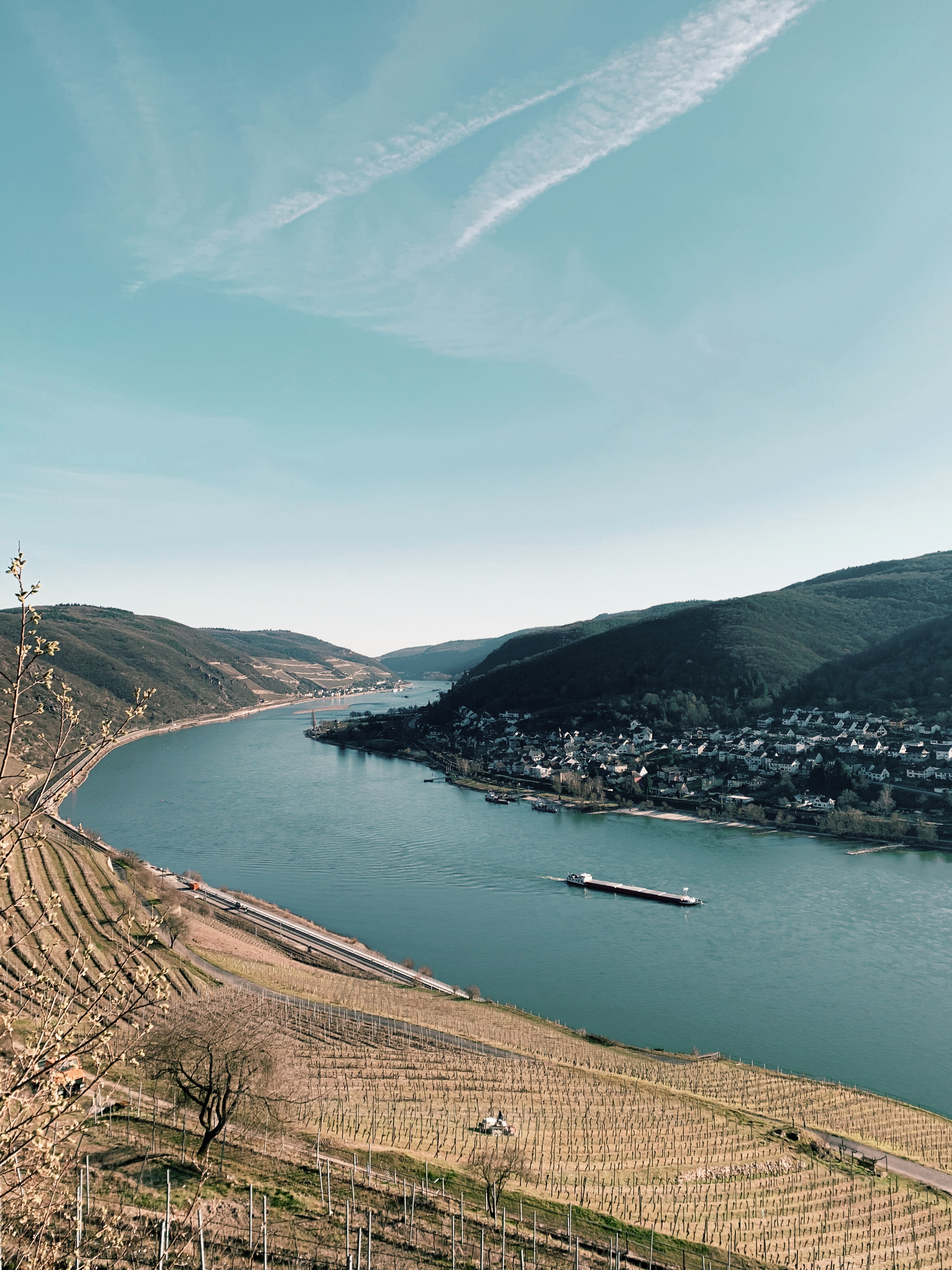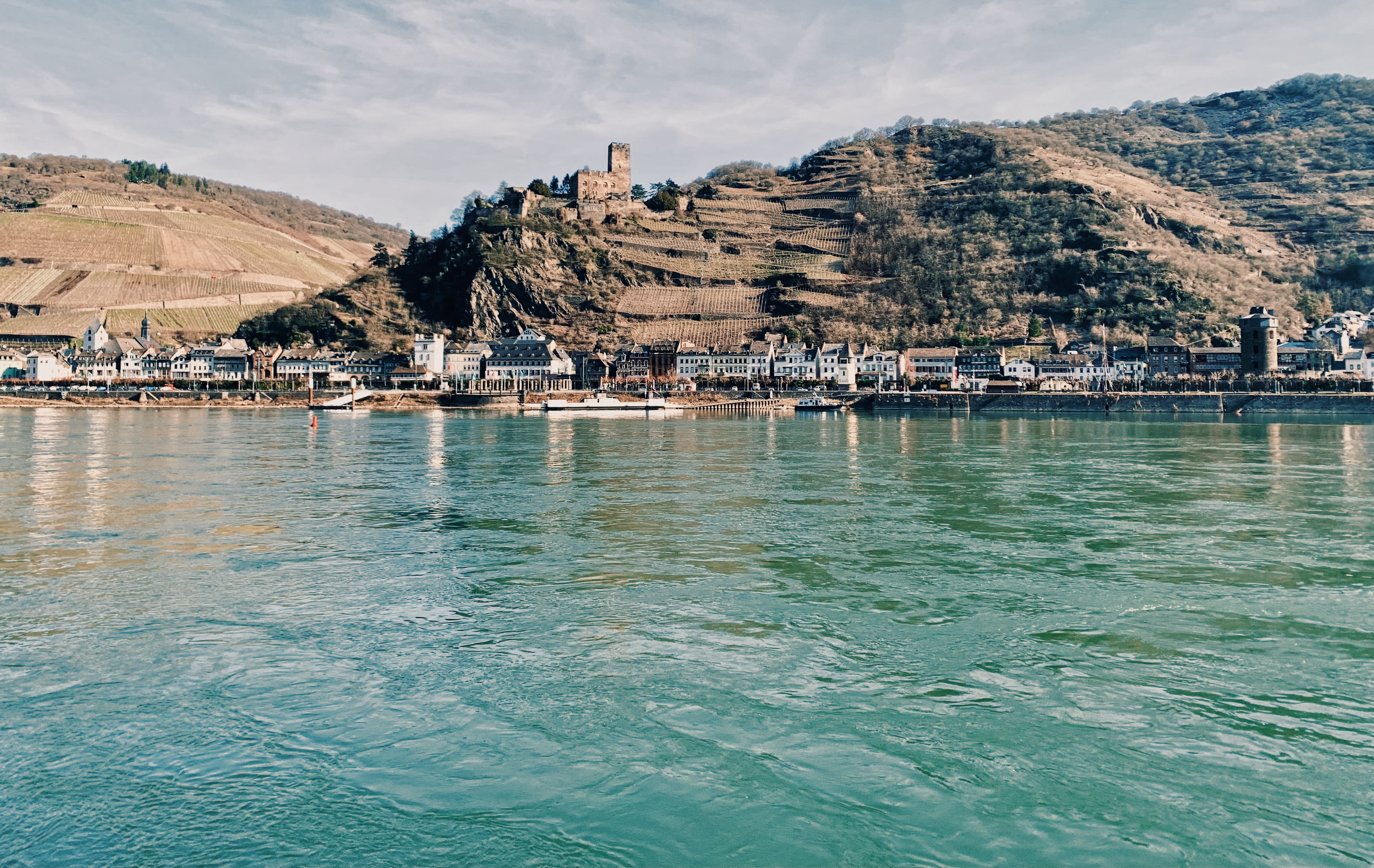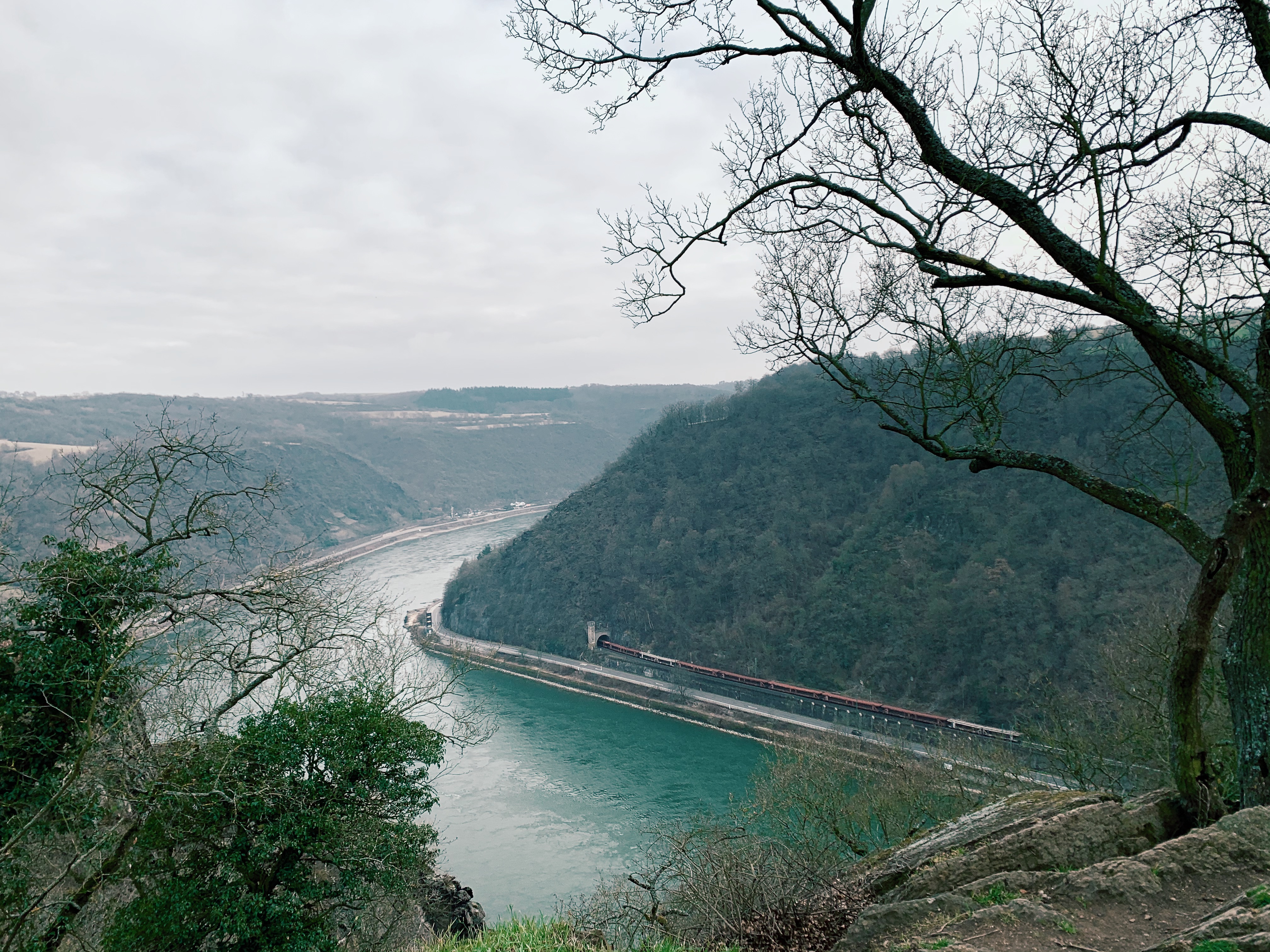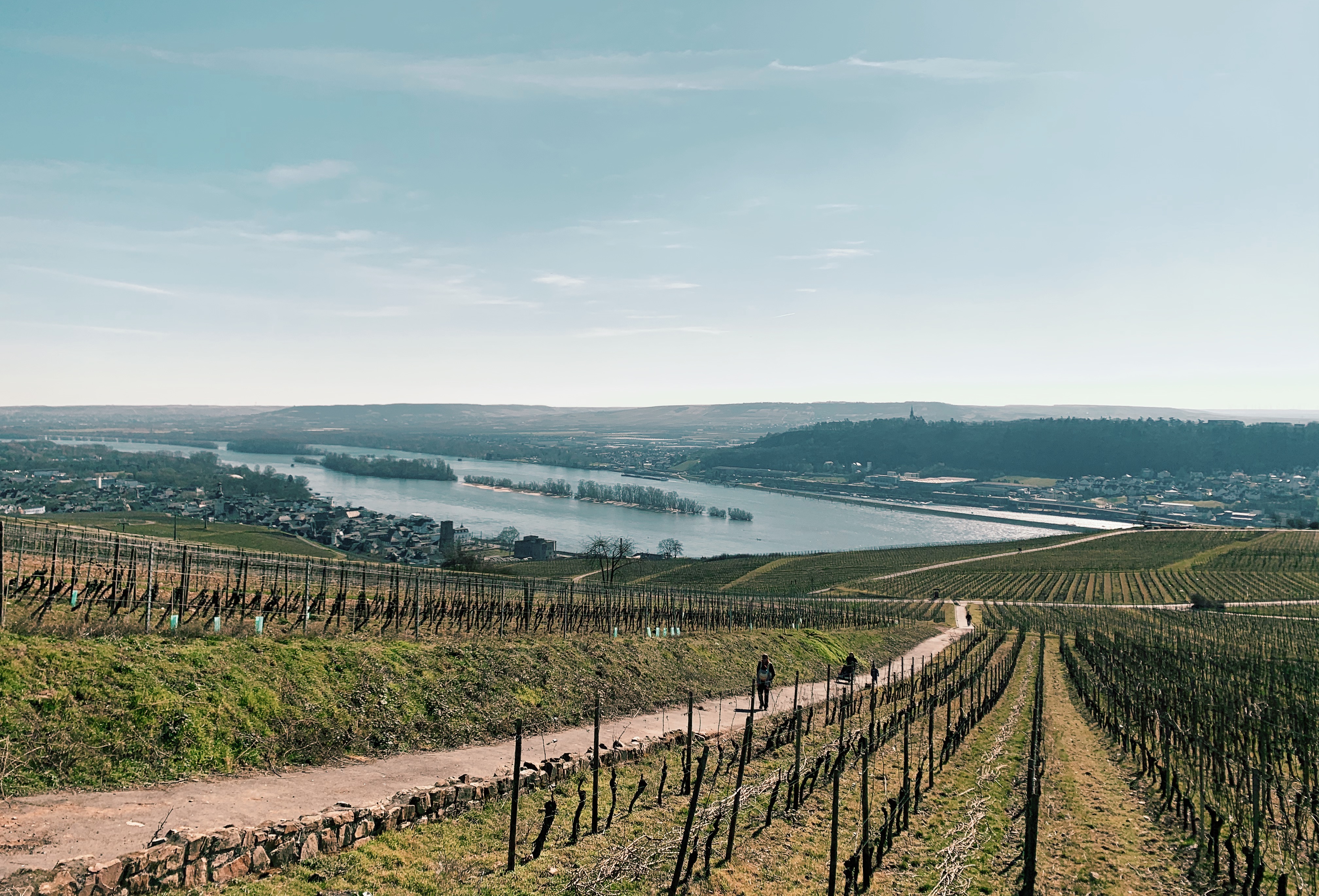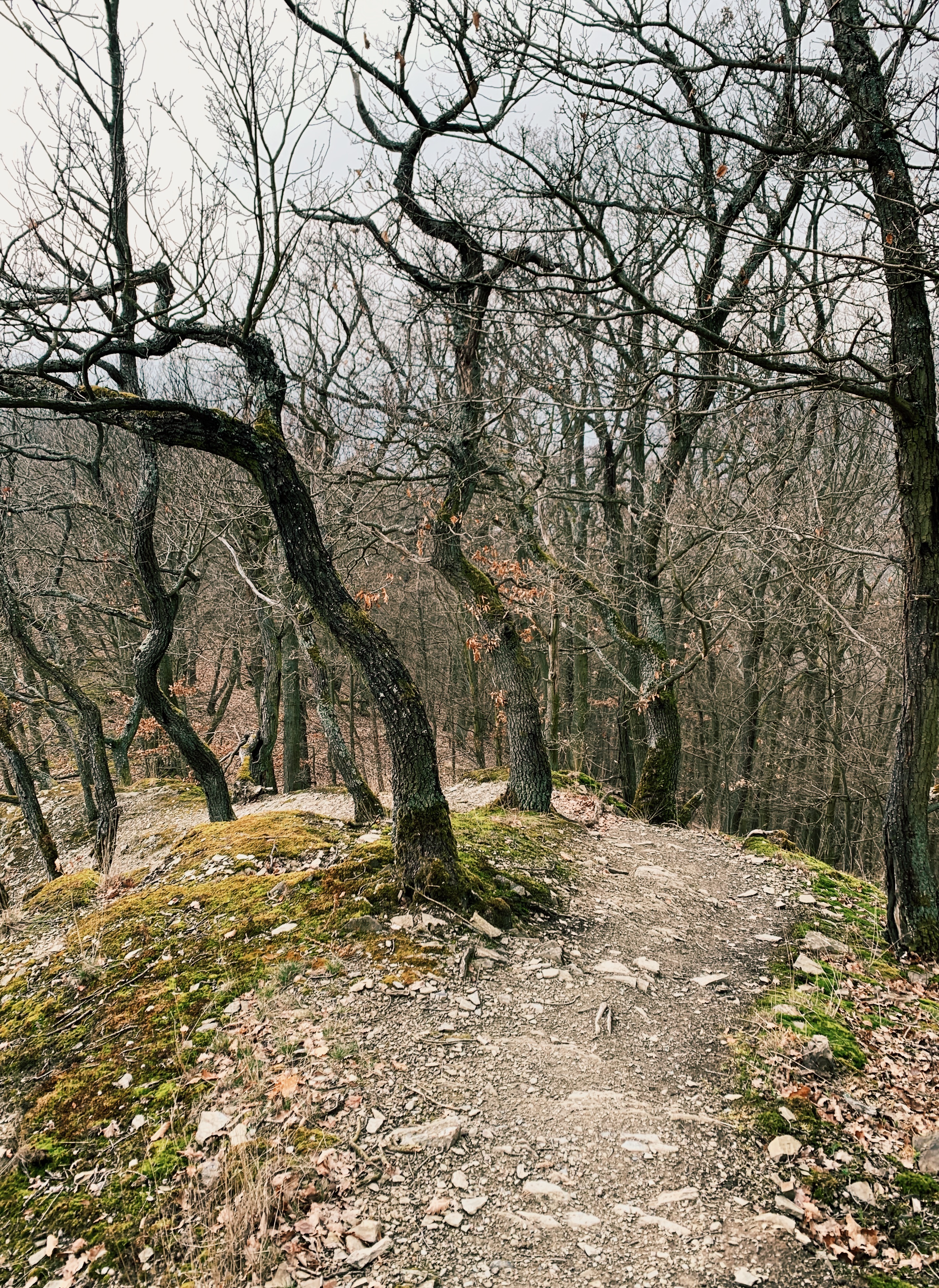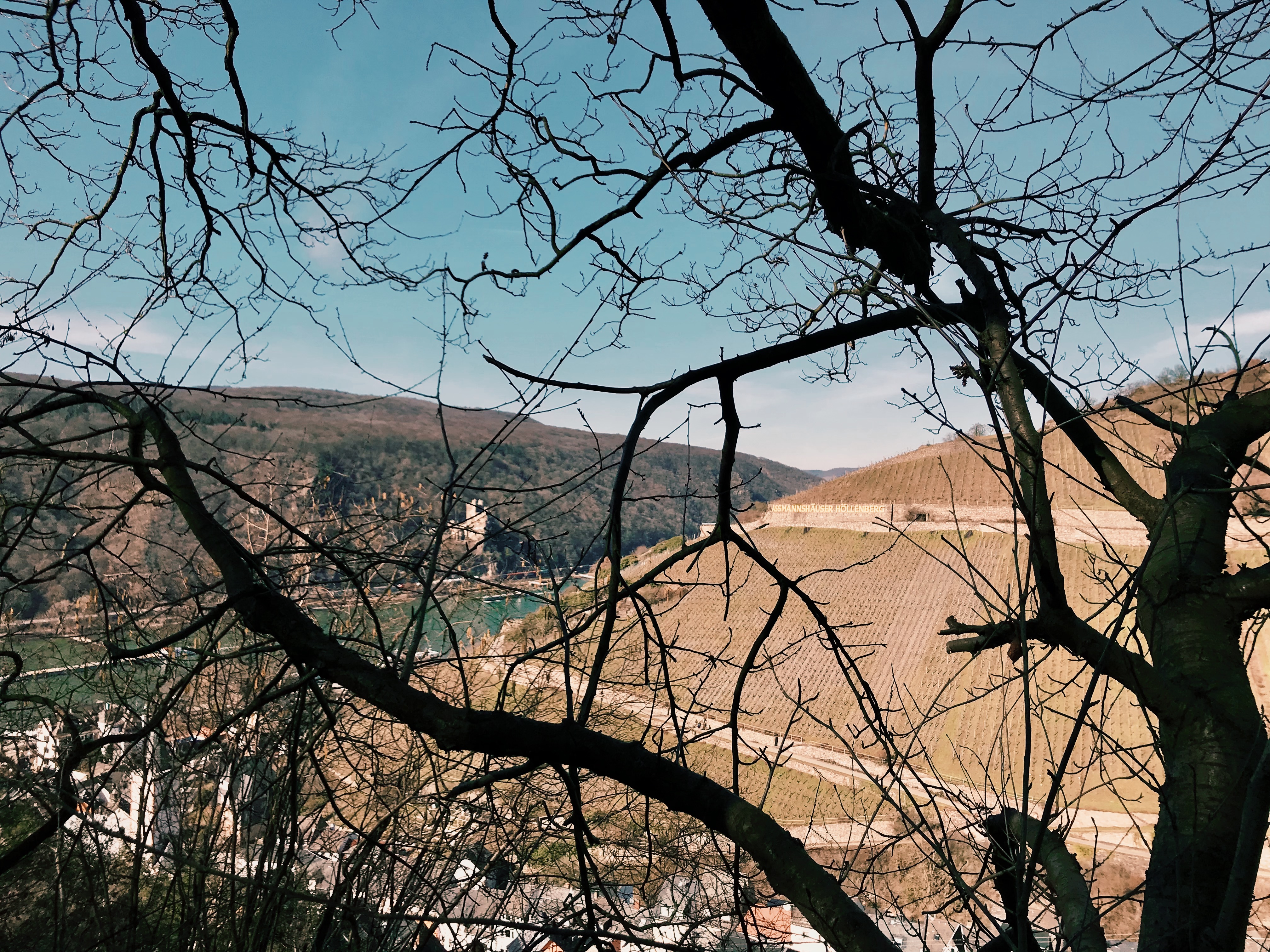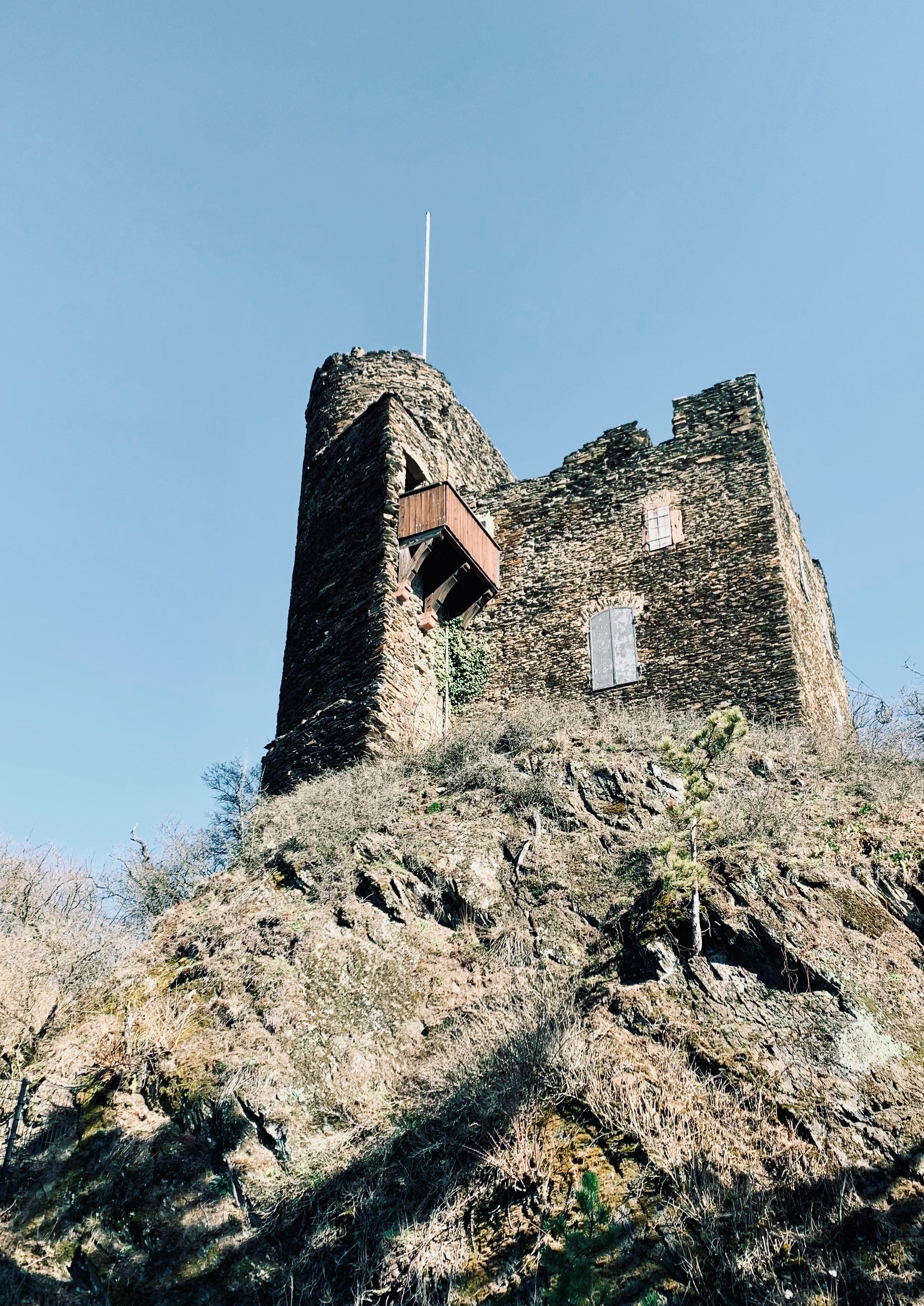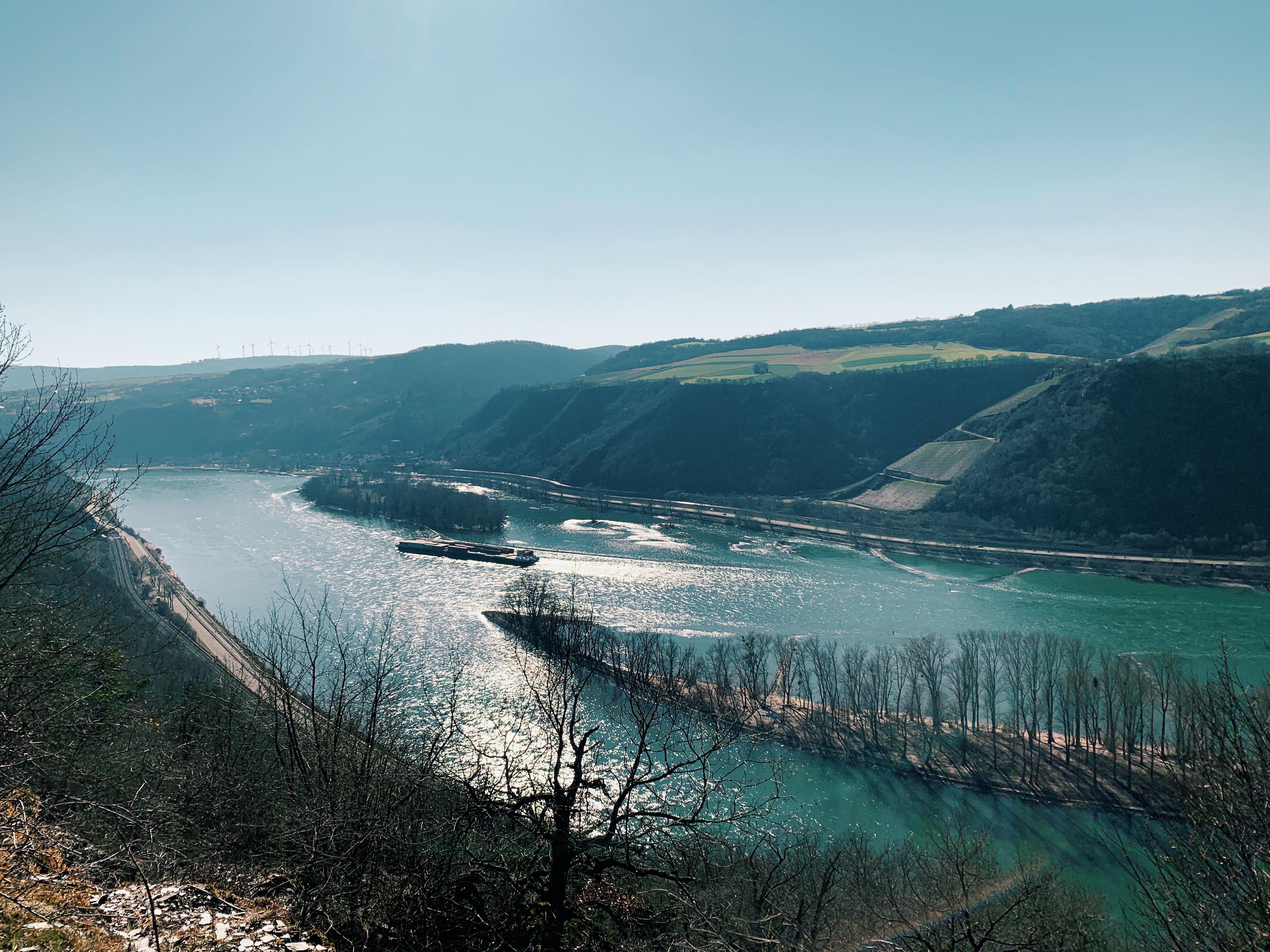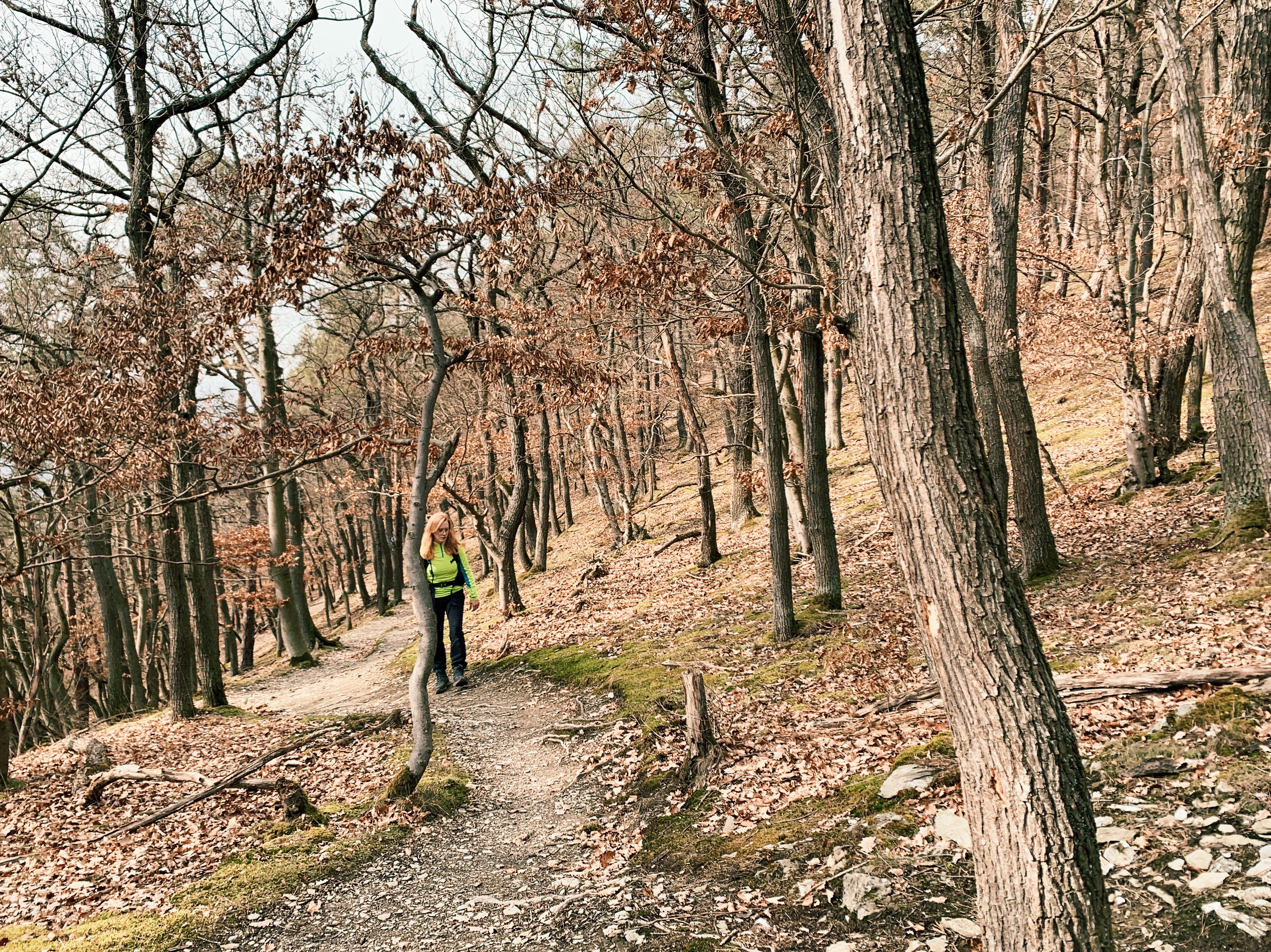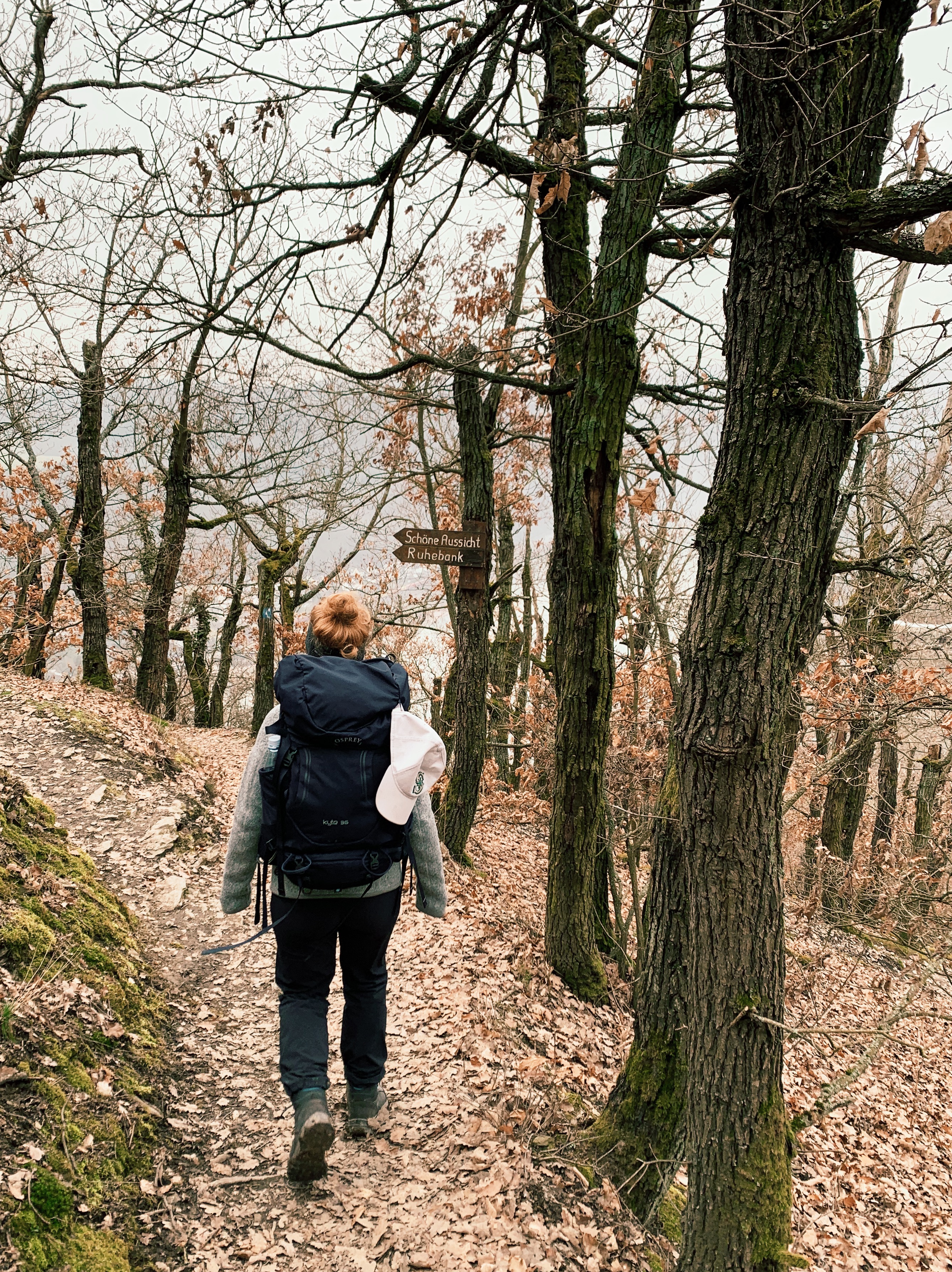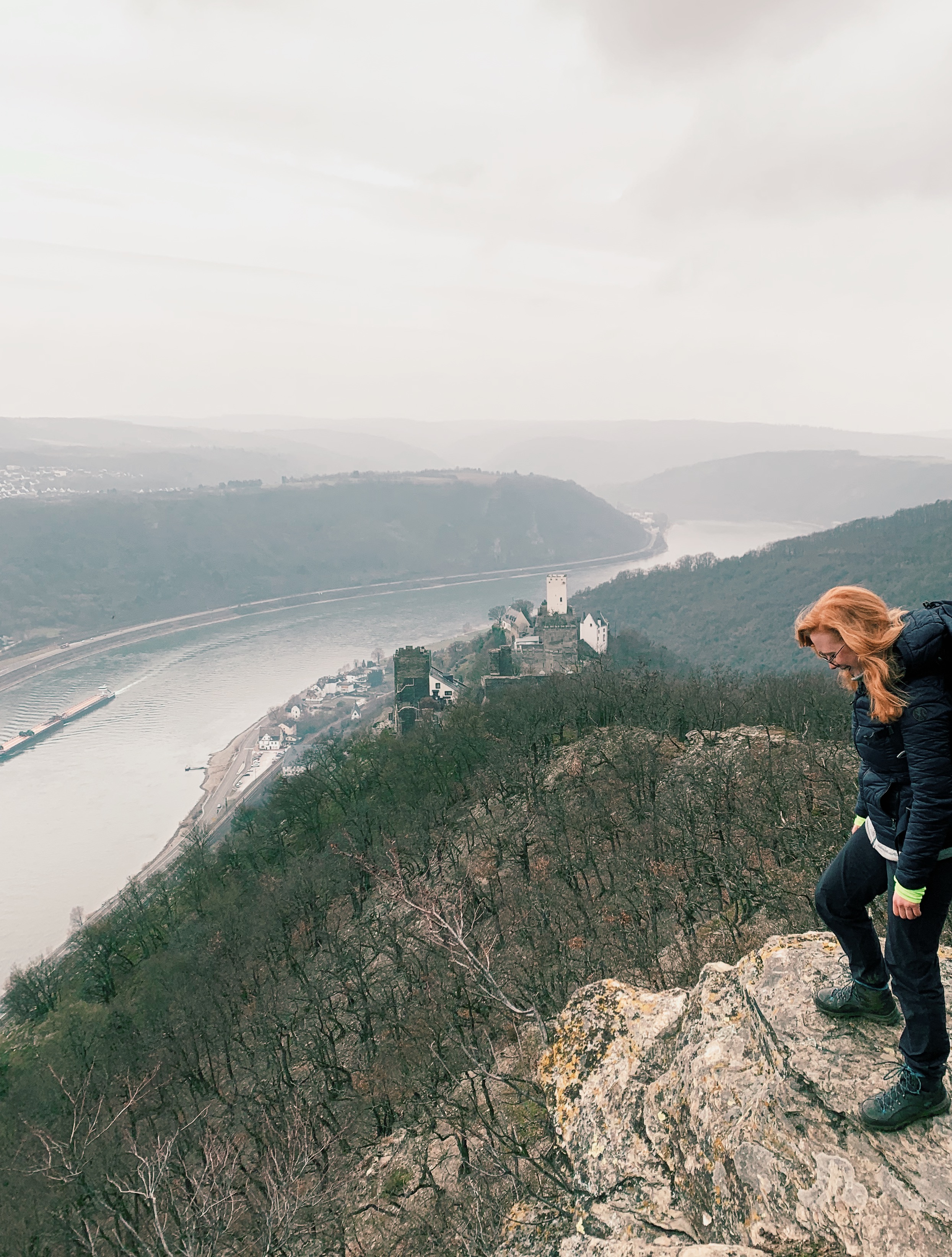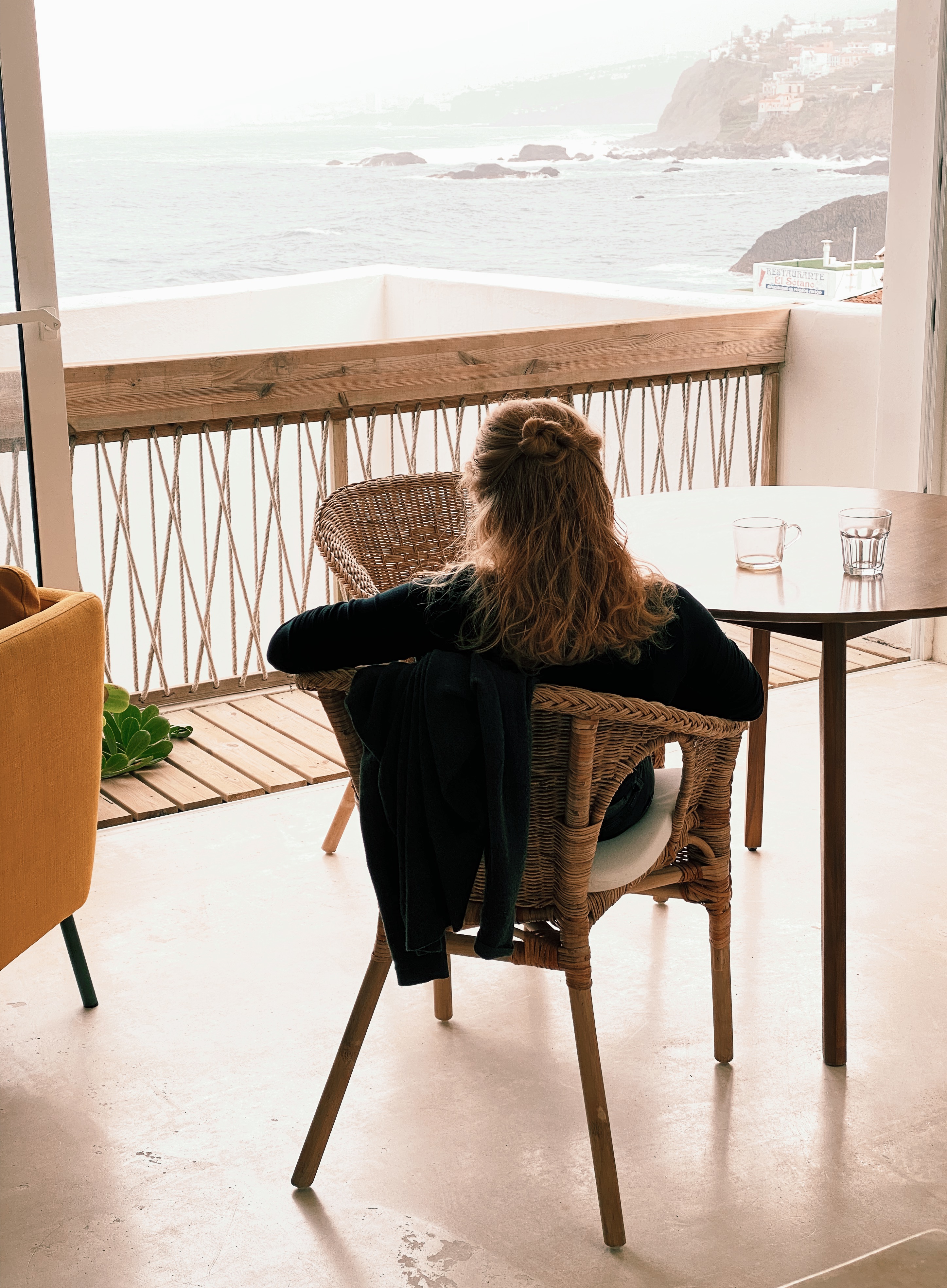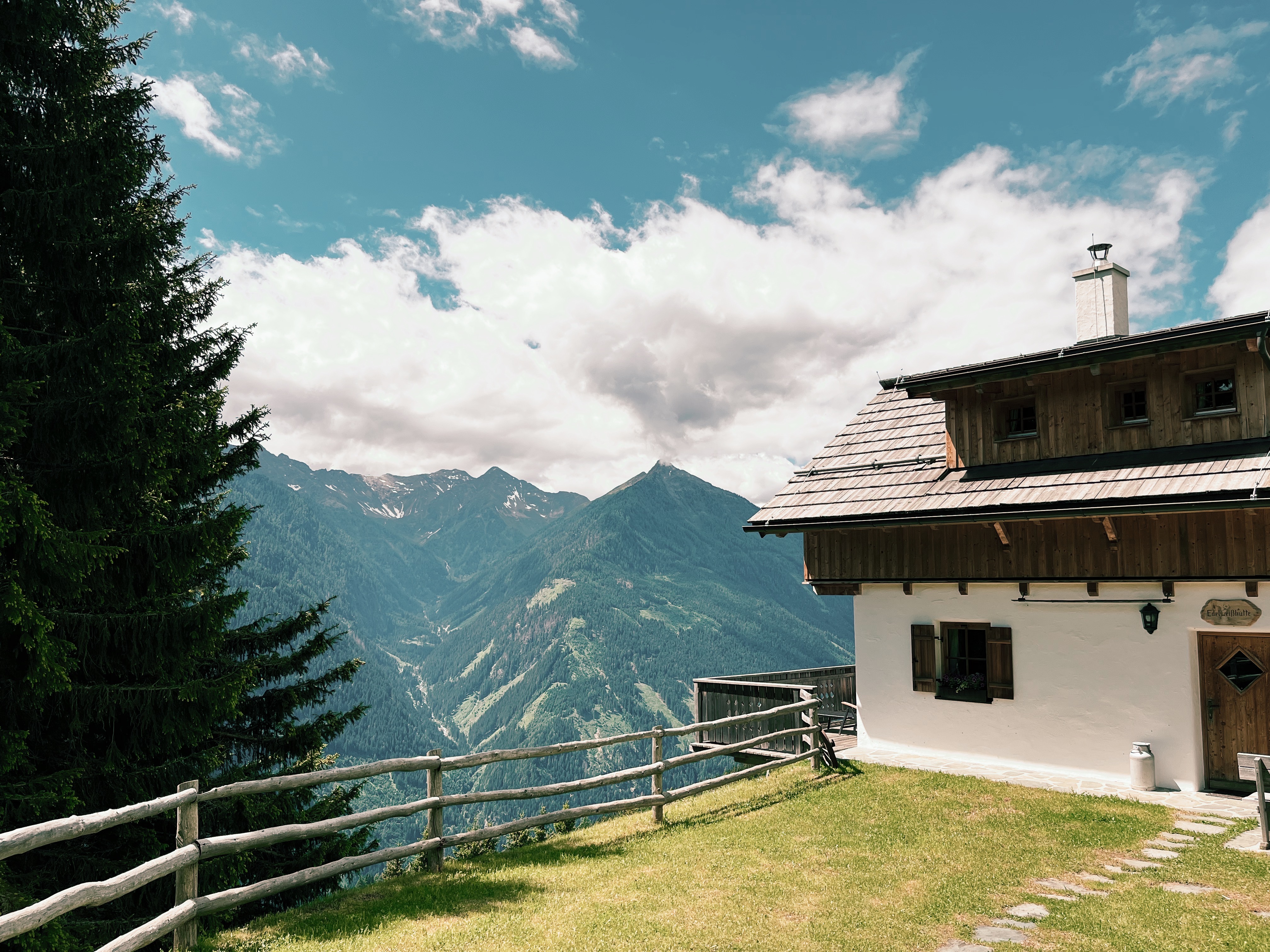The Rheinsteig is one of the most beautiful long-distance hiking trails in Germany and Europe. It has an incredibly varied scenery and offers breathtaking views over the Rhine river valley. Its paths wind along narrow hill crests through colorful vineyards, deep forests, and rich meadows. The northern end of the trail starts right in the center of Bonn, former western Germany’s capital. The cute town is an ideal location to start or end your trip with a little bit of fascinating culture. Leaving Bonn, the Rheinsteig winds through the Siebengebirge mountain range, the oldest nature reserve in Germany. The southern part of the trail leads through the UNESCO world heritage site Upper Rhine Valley, which has the highest concentration of castles in all of Europe. Along the entire trail, there are an incredible amount of world-famous sights, like the Drachenfels, the Loreley statue, and a total of 40 (!) castles. But no matter which part you choose, you’re guaranteed stunning views, picturesque little villages, and delicious wines. All contributing to a perfect combination of challenging hikes and replenishing relaxation.
Although the Rheinsteig consists of 21 stages, stretching over a total distance of 312 kilometers, it’s the perfect trail for an extended weekend trip. Most of the stages can be reached very easily by public transport and you can drop in & out of the trail wherever you fancy. The entire trail is just stunning, which makes it very hard to pick the most beautiful stages. That didn‘t stop me from trying, though. I picked 3 stages for an extended hiking weekend full of breathtaking views, delicious wine tastings, and picturesque traditional German villages.
If you want to read more about the Rheinsteig and the surrounding area you can visit the region‘s official website which offers lots of information and recommendations.
3-Day Itinerary Overview
1. Day: Through Vineyards Into the Clouds (Stage 05 Rüdesheim - Lorch)
2. Day: A Tale of Knights and Princesses (Stage 06 Lorch - Kaub)
3. Day: The Song of Loreley (Stage 07 Kaub - Sankt Goarshausen)
I also created individual gpx tracks for each stage of this 3-day itinerary, which you can download below in the in-depth descriptions for each stage.
You can also download the gpx track for the entire trail here or access other individual stages via the trail‘s website.
How to get to the Rheinsteig
One of the best features of the Rheinsteig is that almost all stages are super easily reached by public transport. This makes it very easy to just do a few stages at a time or even just a day trip. You could also get there by car, park it at one of the train stations along the road, and take the train to pick it up once you completed your trail. However, as it’s so easy, I’d recommend just taking the train directly, if you can. Here are a few examples of how to reach the first stage of this 3-day itinerary from different cities in the area.
Getting to the Rheinsteig From Cologne via Public Transport
From Cologne, the total transit should take you around 2 hours if you take the ICE fast train. If you plan ahead, you can get a cheap ticket for less than 20 Euros. If you have a BahnCard, it’s even cheaper.
- From Köln Hbf either take an ICE (less than 1 hour) or the regional train RE 5 (ca. 75min) to Koblenz Hbf
- From Koblenz Hbf take the local train VIA RB10 directly to Rüdesheim(Rhein) - 1 hour
 Check out the daily schedule here.
Check out the daily schedule here.
Getting to the Rheinsteig From Frankfurt via Public Transport
From Frankfurt, you don’t even need to change trains. From Frankfurt(Main)Hbf, you can just take the VIA RB10 from to Rüdesheim(Rhein) - 1h 11min. Ticket price should be around 13 - 17 Euros each way.
 Daily train schedule here.
Daily train schedule here.
Getting to the Rheinsteig From Koblenz via Public Transport
Getting there from Koblenz is just as easy as it is from Frankfurt. From Koblenz Hbf just take the local train VIA RB10 directly to Rüdesheim(Rhein) - exactly 1h. Ticket price should be around 13 - 17 Euros each way.
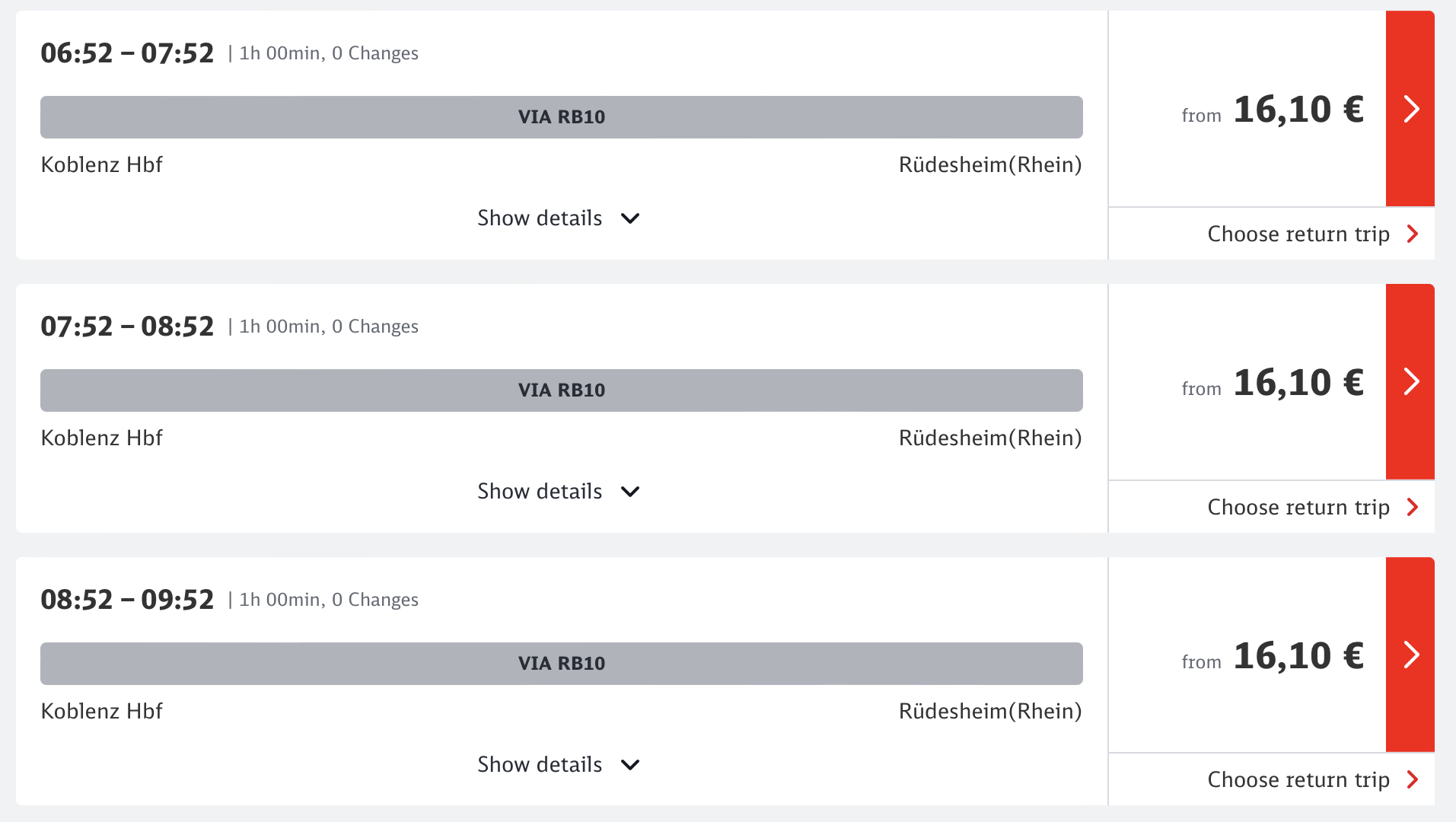
Find the daily train schedule here.
For all connections, you can buy tickets directly via Deutsche Bahn. If that’s not possible for whatever reason (they’re a bit weird sometimes) try getting them via the local RMV website if you’re traveling from Frankfurt or Koblenz. And the local VRS website if you’re traveling from Bonn or Cologne.
Detailed Stage Overview of my 3-Day Itinerary for Hiking the Rheinsteig
Day 1: Through the Vineyards Into the Clouds
Route: Rüdesheim to Lorch
Distance: 20,4km
Elevation: 719m (-933m)
Accommodation: Burghotel Lorch, Gästehaus Klostergasse, Hotel Zur Krone
Highlights: Niederwald monument, Jagdschloss Niederwald, Höllenberg
Download the gpx track for this stage.
The beginning of this stage will take you from Rüdesheim Bahnhof up a winding road through a huge, gorgeous vineyard. You’ll complete your first 200 meters of elevation before you know it and you’ll be rewarded with the first incredibly stunning viewpoint and landmark, the Niederwald monument. From here you’ll get a breathtaking view over the Rhine river, winding through the lush valley below.
You might find it hard to take your eyes off that beautiful view. Well, the good news: you don’t need to. It’ll accompany you for the next 2-3km before you head land inwards. You’ll soon reach an old aristocratic countryside estate, the Jagdschloss Niederwald. It has a fascinating history. Beyond having been a hunting and holiday residence for different aristocratic families, its “Green Saloon” hosted a meeting in 1948 where the foundations for today’s German Constitution were laid. It has now been turned into an up-scale hotel, including a spa and restaurant. It’s probably not the best option for today’s hike, but I’m sure it’s generally worth a visit. If you ever want to come back, I’d recommend making a reservation beforehand. They’re open Tuesday to Sunday and you can find more information here.
Right after the Jagdschloss, you’ll pass by a small wildlife park and you might be able to see some deer. Making your way into a gorgeous forest, you’ll start to slowly descend again until you reach the picturesque village of Assmannshausen. Its wines are world famous (well, maybe it’d be better to say quite well known in Germany… or the Rhine region… anyhow, they’re nice, so try one for dinner if you fancy). Once you’ve crossed the road, you’ll make your way up another vineyard. This one is one of the most well-known vineyards of the region: Höllenberg. Which, other than what its name suggests, has nothing to do with any devils, although literally translated it means hell (“Hölle”) mountain (“Berg”) and the steep ascend might make you feel it is hell indeed. The name originates from the word ‘helda’, meaning ‘steep slope’. But don’t despair, it’ll be worth it. Some more gorgeous views over the Rhine valley await you.
In similar fashion, the route continues along winding paths, up and down hills and valleys until you reach the cute little village of Lorch. There are several really nice benches along the road which are ideal for a small picnic. So make sure to bring some snacks along. Alternatively, you could pause in Assmannshausen for lunch in a traditional German pub. However, by then you’ll just have completed about 1/3 of the stage.
In Lorch, there are several possibilities to spend the night. Most of the hotels and holiday apartments are rather simple, yet more than suitable for spending a night on a thru-hike. Depending on if you prefer a hotel or holiday apartment, you can check out a few of the places below:
Day 2: A Tale of Knights and Princesses
Route: Lorch to Kaub
Distance: 13,8km
Elevation: 500m (-499m)
Accommodation: Hotel Haus Berlin, Holiday Apartment, Hotel zum Turm
Highlights: Nollig castle, crossing the border form Hessen into Rheinland-Pfalz
Download the gpx track for this stage.
Today, several highlights await you. It’s a beautiful stage with even more stunning views. It’s also quite a bit shorter than yesterday’s stage, which means you can enjoy an extended breakfast or get to your destination early for a relaxed afternoon off (or both).
Starting the stage by crossing Lorch, you’ll soon embark on a steep ascent to Schloss Nollig, the remaining ruins of a 14th-century castle overlooking the river. It’s easy to imagine knights and kings making their way up to the castle on horseback a few hundred years ago to get a better sight of anyone approaching their land. Today, the ruin mostly serves as a memorable picture backdrop, which doesn’t make it any less impressive, though. Hiking on, you‘ll make your way down the winding path into Lorchhausen, Lorch’s little sibling, and up through the surrounding vineyards again. Soon enough, you’ll be led into a magical forest and you’ll pass the border from Hessen into Rheinland-Pfalz. The entrance is marked with a hand-made arch and you even have the chance to sign a „summit“ book. After a few more slight ups and downs you’ll be able to see the Rhine again. This also means, one of the best break spots of today’s stage isn’t far off anymore. There’s a great bench from where you can see both Kauber Werth & Bachacher Wert (two small islands in the Rhine) while sipping your tea and munching away on some snacks. After this, you’re nearly done. A few more kilometers until you reach Kaub, the final destination for today’s stage.
Kaub is another cute village typical of the region. If you get there early and looking for things to do apart from enjoying some local food and wine, you can take the ferry to cross the river and hike up the hill on the other side of the Rhine. This will give you a chance to enjoy the scenery from a different perspective. The views are definitely worth the additional 150m of elevation. But if your legs are sore enough already, you can also take the ferry to Pfalzgrafenstein to visit the little “beach” and the castle there.
There are a few locations in Kaub where you can spend the night. All of them are a bit old-fashioned, but that kind of also makes up the charm of the area. In any case, they are all clean and people are really friendly and welcoming.
- Hotel Haus Berlin
- Holiday Apartment (spacious and very kind owners)
- Hotel zum Turm (a bit more on the pricier side, but also the most „luxurious“ option)
Day 3: The Song of Loreley
Route: Kaub to Sankt Goarshausen
Distance: 21,5km
Elevation: 774m (-779m)
Highlights: Loreley viewpoint (a fake and a real one), Burg Katz
Download the gpx track for this stage.
On the last stage of this 3-day hiking trip, another world-famous sight awaits you. But first, there’s some ground to cover. It’s the longest stage and sports quite a bit of elevation, too. Again, you’ll start the day with a relatively steep ascend, passing through what feels like the backyards of Kaub’s residents as well as the arch of another ruin. Winding along the hill crest, more breathtaking views await you. From my perspective, the best thing about this area is, that it’s absolutely worth the visit all year round. You’ll find vastly different, yet equally stunning landscapes across all seasons. In spring, everything seems to burst with life, rich greens, and beautiful colors. In summer, there’s plenty of sun, the air is filled with the smell of flowers, and the wine grapes are starting to ripe. In fall, everything shines in golden red, the air is filled with anticipation, and festivities go on all around the area as it’s wine harvest season. And in winter, an incredible calm takes hold of nature as everything retreats, covered in a thin blanket of snow. Just to spring to life again with the first rays of spring arriving.
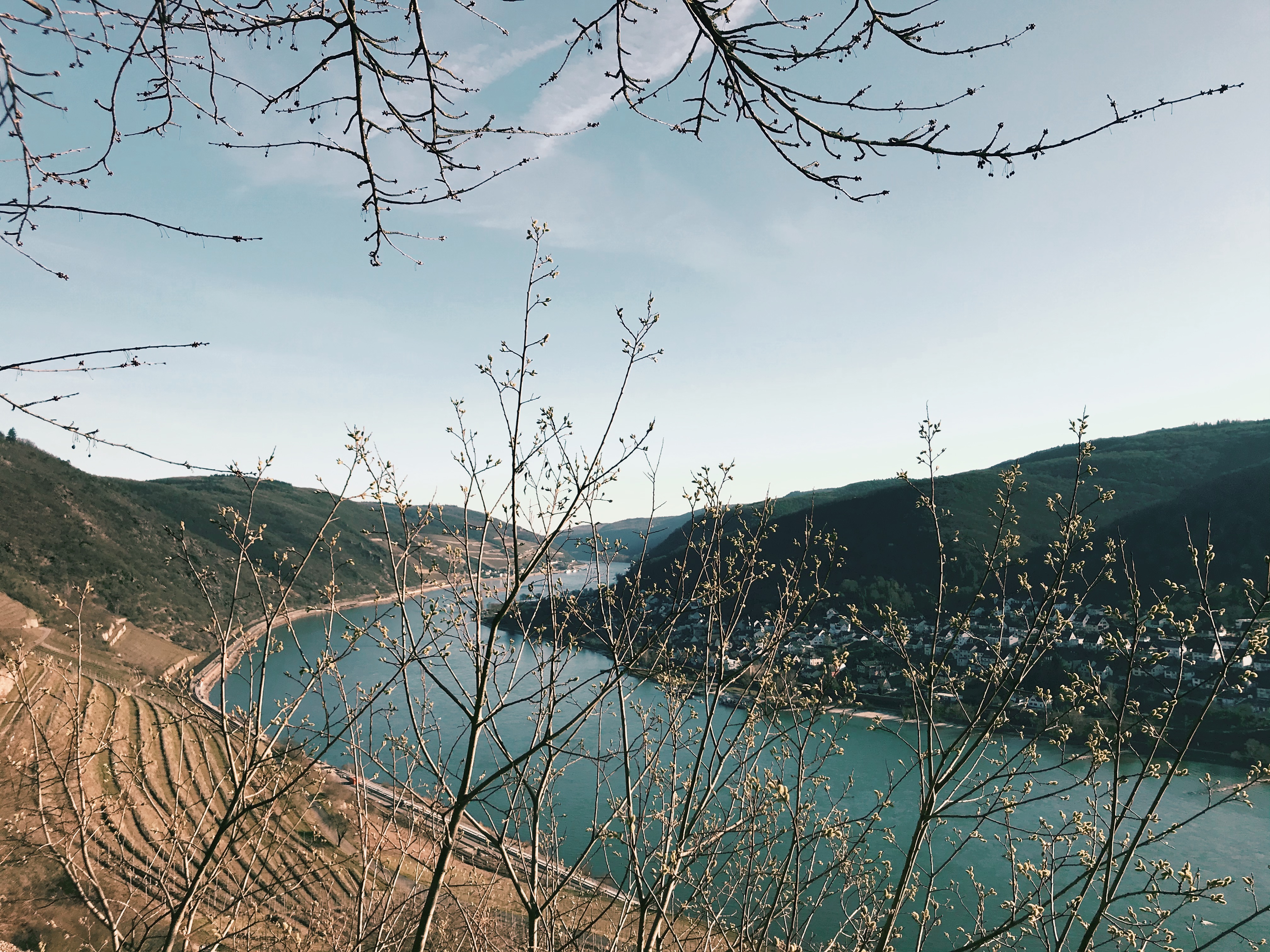
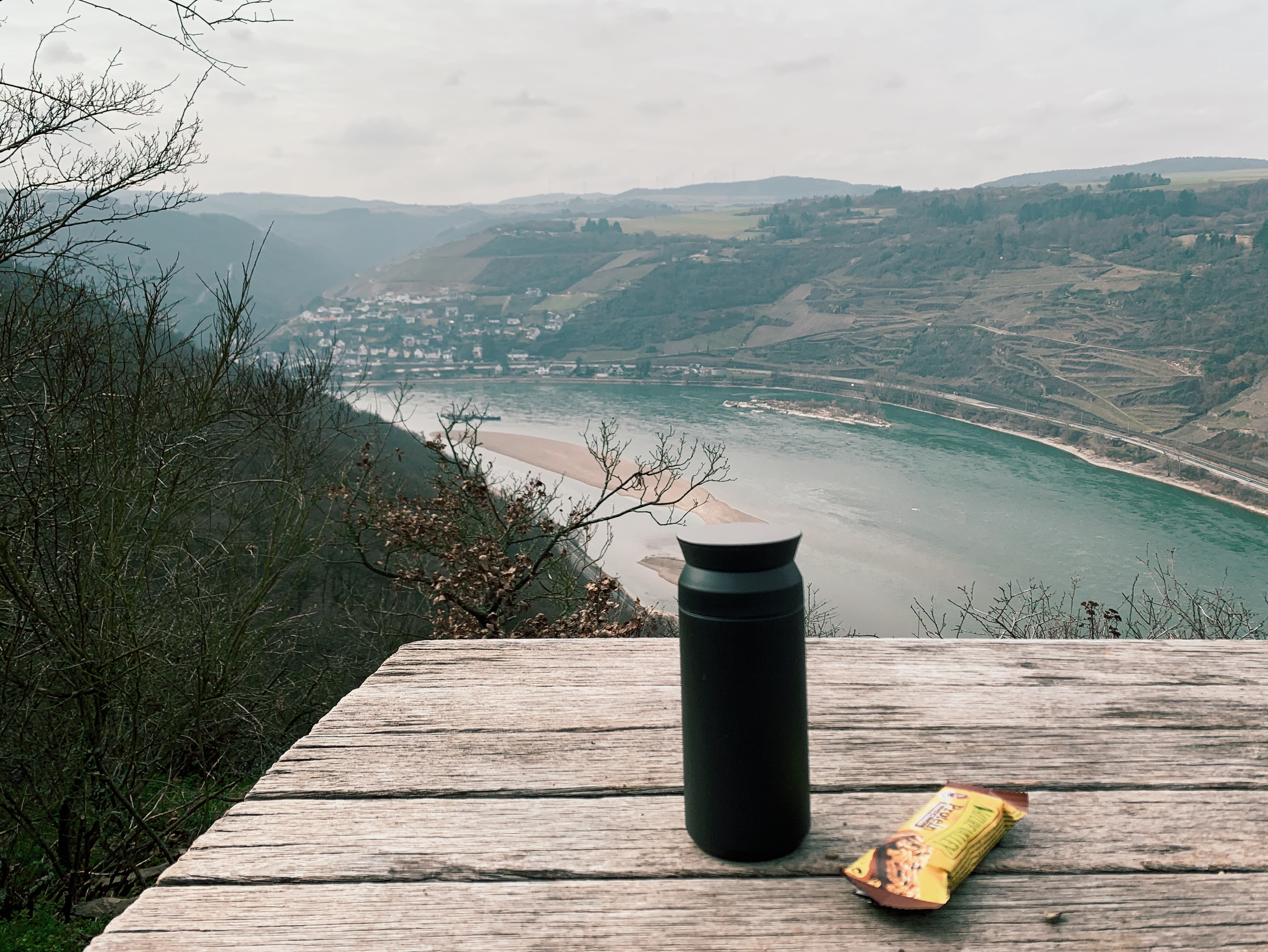
After a bit more than two-thirds of the stage, you’ll approach the “Loreley viewpoint”. The Rheinsteig trail takes a left turn here leading you through an area that is sort of an amusement park or tourist attraction area, with a large playground and a few kid’s rides. In summer there are some food stalls etc. as well. All leading up to a viewpoint overlooking a 132-metre-high (433 ft) slate rock on the right bank of the Rhine. There are many tales and legends around this rock. The most famous is based on a poem by Heinrich Heine, a German poet, and writer. He builds on an old tale, according to which Loreley was some sort of siren sitting on top of the rock cliffs at the front of the small island. Her songs and appearance were said to be so beautiful, that any sailors passing by were so mesmerized that they crashed their ships on the rocks. I can’t tell you if that tale is true or not, but what I can tell you is that there’s indeed a statue of a woman mounted on top of that clifftop. Only you can’t see it from the “Loreley viewpoint”. Yes, you read that right. They make you walk a good 15 kilometers, then take a detour of another 2 kilometers to get to that legendary viewpoint just to find out that you’re not even able to see that mystical statue. As you might be able to tell, I was slightly upset.
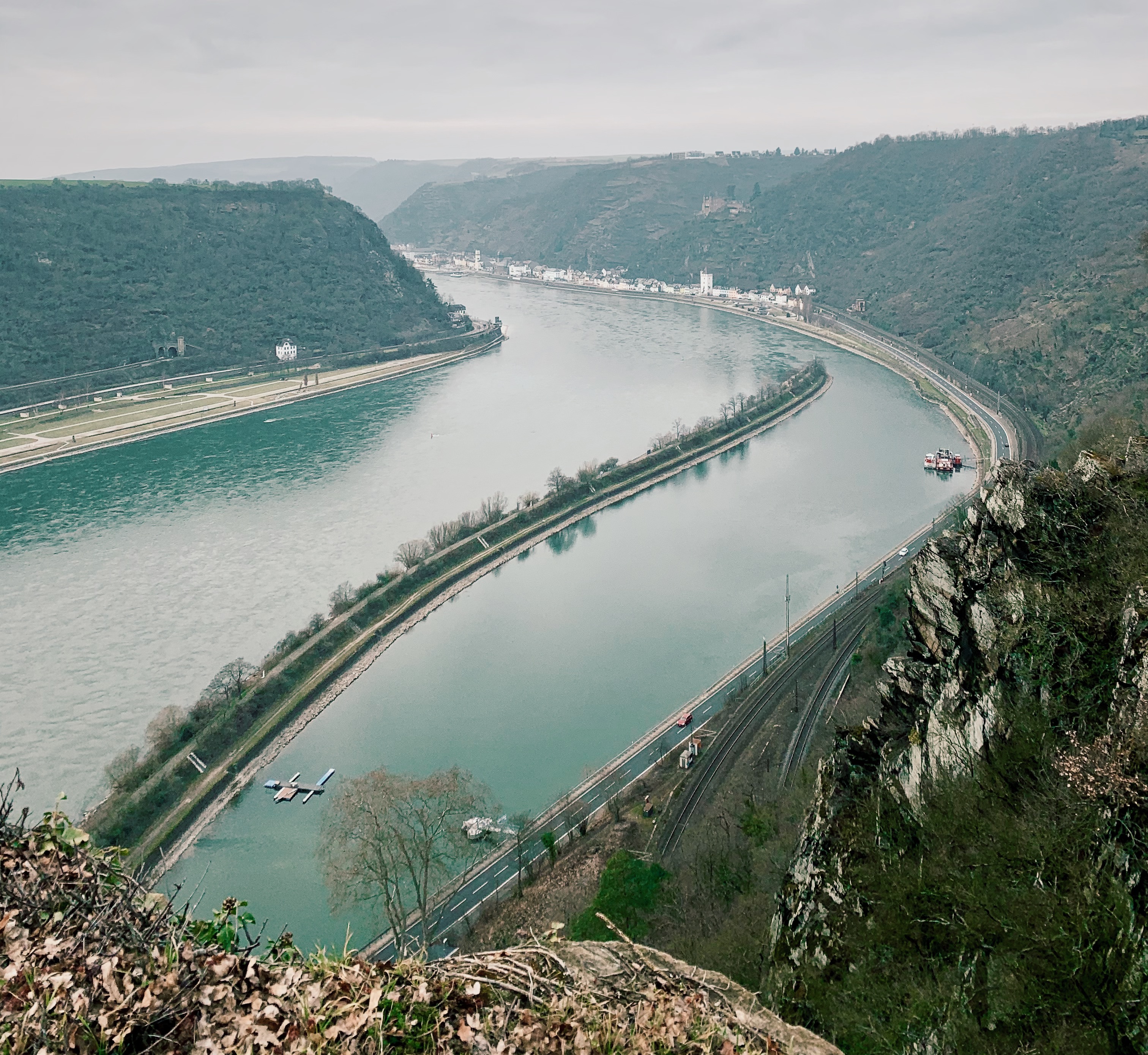
But don’t worry, I’ve got some good news. There’s a shortcut AND an even better viewpoint from where you can actually see it (-ish).
TLDR: Don’t follow the Rheinsteig trail through the Loreley tourist attraction and to the designated viewpoint. You can’t see the statue from there. Take a shortcut and enjoy a secret (and much better) viewpoint!
 My recommended shortcut is the red line (as opposed to the blue trail in the image above), which saves you the touristy attraction area and the frustration of reaching the viewpoint from which you don’t see the statue you were promised to see. It also takes off a good kilometer, which I see as an added bonus on this stage.
My recommended shortcut is the red line (as opposed to the blue trail in the image above), which saves you the touristy attraction area and the frustration of reaching the viewpoint from which you don’t see the statue you were promised to see. It also takes off a good kilometer, which I see as an added bonus on this stage.
 To be fair, even from this viewpoint, the statue is still very far away. So, if you can make it out from here, it’ll be tiny (as in so tiny, I didn’t even take a picture). If you want to get a good, proper look, I’d recommend doing a boat tour on the Rhine, which is admittedly a lot less active than hiking the Rheinsteig, but a nice thing to do in the area anyways. You’ll get very different but not less beautiful views and perspectives from a boat on the river.
To be fair, even from this viewpoint, the statue is still very far away. So, if you can make it out from here, it’ll be tiny (as in so tiny, I didn’t even take a picture). If you want to get a good, proper look, I’d recommend doing a boat tour on the Rhine, which is admittedly a lot less active than hiking the Rheinsteig, but a nice thing to do in the area anyways. You’ll get very different but not less beautiful views and perspectives from a boat on the river.
Alright, now that we‘ve seen Loreley (well, -ish), another highlight is waiting just around the corner. From the real Loreley viewpoint (that‘s how I‘ll name it now) it‘s only a short descent until you reach St. Goarshausen, the end of the stage. On the way, you‘re passing another beautiful castle (I told you, it’s the area with the highest density of castles in Europe). „Burg Katz“ (translating to cat castle) sits just above St. Goarshausen, overlooking the valley and surrounding area. Fun fact: just a few kilometers further north is „Burg Maus“ (translating to mouse castle). I‘m no expert, but I have a feeling there might have been some rivalry between the two castles back in the day.

- Secthaus Delicat is a cute little winery in a very nice setting
- Loreley Kellerei (Vinothek open 14-17 Uhr)
Maybe you even want to stay for a few more days to enjoy the beauty and many sights of the area. Or you‘ve caught the fever and want to hike on for a few more days? You‘ve got a good 15 stages left until Bonn, so don‘t hold back!
What to Pack for a 3-Day Thru-Hike?
For any long-distance hike, I’d recommend packing as lightly as possible, while still making sure you take all the essentials. And keep in mind that “the essentials” can mean very different things and varies from person to person. Especially for a shorter thru-hike like this one, I think it’s also important you pack things that make you feel comfortable. You won’t have to carry your backpack across a huge distance over 5 weeks, so you might as well include that slightly heavier fleece jacket that always makes you feel happy and cozy in the evenings. I always think hiking should be fun and enjoyable, so that’s an important factor for my packing as well.
I put together some guides and packing lists for long-distance hikes in Europe. I’d recommend you to check out my ultimate packing list for hiking the Alpe Adria Trail in spring, as many items included here will also form your base for a shorter thru-hike.
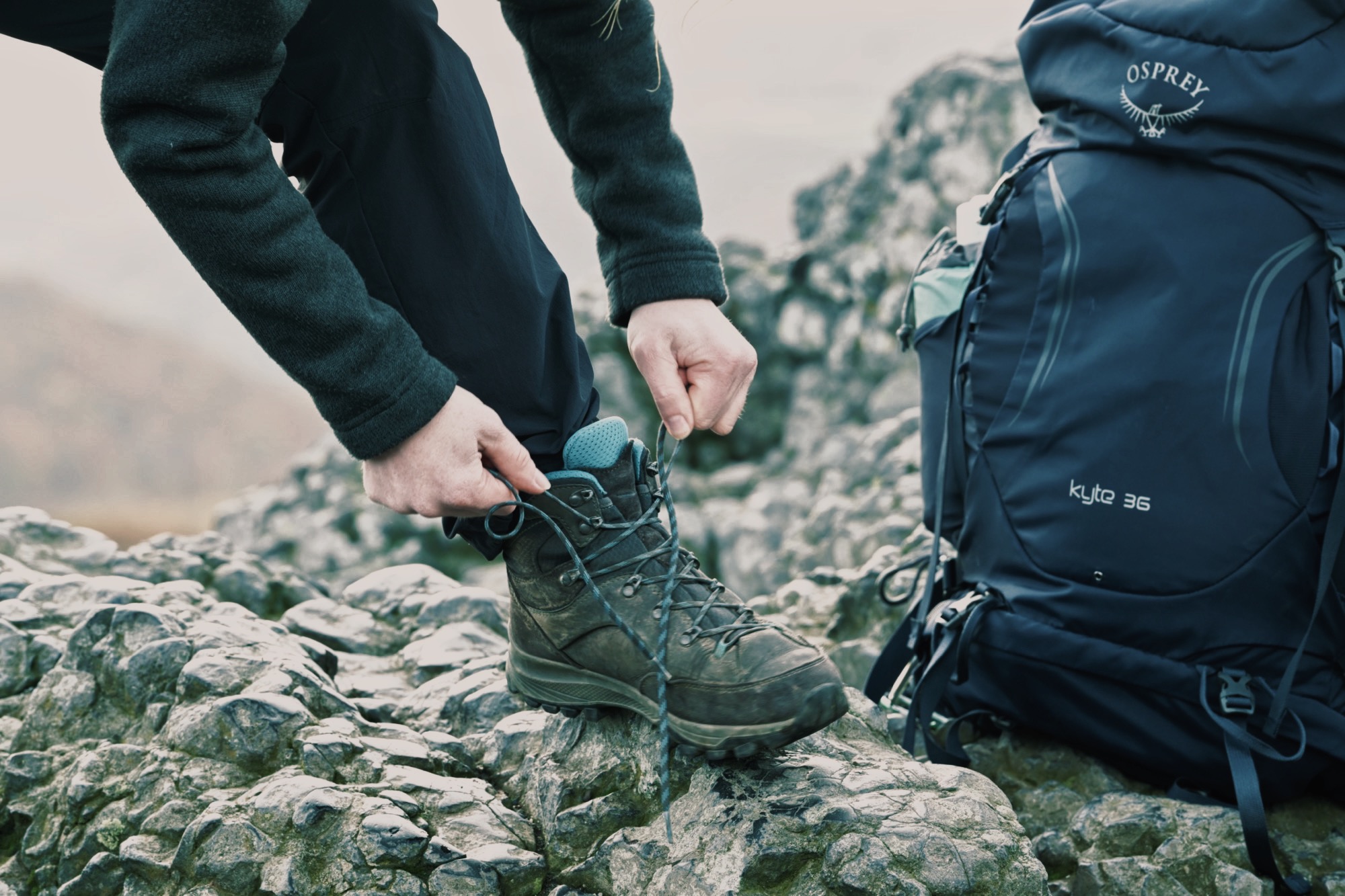
Never go on a hike without a first aid kit, even if you’re not off the grid. Even an untreated blister or a sudden headache can cause you great discomfort on a day hike, so make sure you always have this packed as part of your essentials.
If you’d like to dive deeper into my packing list recommendations check out these guides:
- Layer up! Which Clothes to Pack For a Long Distance Hiking Trail
- Packing List for Most Important Gear for the Alpe Adria Trail
- Packing List Food & Drink Equipment for a Long-Distance Hiking Trail
- Minimal Toiletry Packing List to Take on a Long Distance Hiking Trail
A 3-Day Hike on the Rheinsteig Just Has to be on Your Bucket List
The Rheinsteig is an absolutely stunning, and from my perspective still vastly underrated, long-distance hiking trail in Europe. It leads through very varied scenery and offers breathtaking views over the Rhine river valley. While challenging, it‘s also very suitable for beginners and offers the comforts of different accommodation options at the end of each stage. You can easily reach most stages via public transport from the major cities around the area, making it the perfect trail for a long-weekend hike. My 3-day itinerary covers 3 stunning stages and several highlights like a famous vineyard, the statue of Loreley, and several castles you‘ll pass by. This will give you a great impression of the beauty and diversity of this trail.
Don’t have as much time or curious to explore another part of the beautiful Rheinsteig? Check out this 2,5-day weekend hiking itinerary for the Rheinsteig.
Are you looking for inspiration on other long-distance hikes in Europe? Check out my guide to the Alpe Adria Trail, a gorgeous long-distance trail leading from the Austrian Alps via Slovenia to the Adrian sea in Italy.


